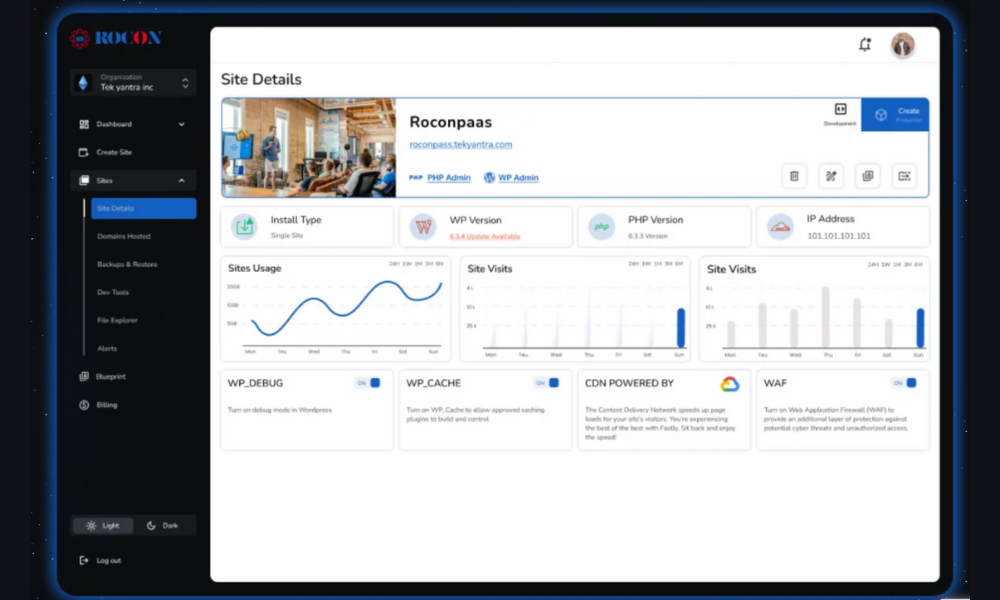Data insights are extremely crucial to create functional, accessible, and smooth website experiences. It is specifically more important for the design process which can positively or negatively impact user experience. The designers rely on various tools and techniques to extract reliable data. Heatmaps are one of the most effective tools you can utilize for this purpose.
Heatmaps are maps visualizing data trends and insights through color saturation. These maps not only effectively highlight the data but are also easy to interpret. Implementing these to your web design procedure will make it easy to prioritize user ease and experience.
Scroll down into the details of this article to learn and explore why you should implement heatmaps in your web design process and take the necessary measures required for it.
Top 5 Reasons to Use Heatmaps during Web Design
Developing a web design without any research or data insights has the possibility of wasting your time. All your efforts will go down the drain and sites will be unable to draw the target audience as well as the intended outcomes. However, leveraging heatmaps during web design can offer detailed data insights and make the process even more meaningful and successful.
Here are some of the most notable reasons to use heatmaps during your web design procedure.
1. Identify Trends and Patterns
Identifying trends and patterns is the foremost reason to implement heatmaps in web design procedures. Such maps can highlight the trends in user behavior and specific patterns users follow while exploring a site.
It will enable you to identify the practices that will go in your favor, as well as the ones that are not popular anymore. In other words, heatmaps will allow you to follow the trends of user behavior and offer a better quality experience. Moreover, you can also skip less popular patterns so stop wasting time on aspects that do not offer much output.
2. Understand User Behaviour
Understanding user behavior is the next reason to use heatmaps during the web design procedure. The designers use various types of tools and charts to get insights into user behavior. However, all these highlight the data in a complex manner, due to understanding it becomes tricky. On the contrary, heatmaps highlight just the right aspects of data with saturated, heat patches which makes it easier to interpret.
You can get better insights into how users approach and navigate through a web page. You can also identify page elements that get the most clicks. Moreover, through the data, you can interpret user engagement levels and also the areas that cause friction in user experience. All of this will enable you to create a perfectly engaging site according to user behavior.
3. Optimize UX
Optimizing the user experience is the next reason to opt for heatmaps during the web design procedure. All aspects of a web page or website do not get equal attention and hype. Some aspects enjoy high interaction while others get low interaction. Heatmaps create a clear distinction between these and make it easy for everyone to understand them.
You can use these insights to optimize site or page layout and make crucial aspects easily accessible for everyone. You can utilize the data to improve your button design, and placement and ensure users can find it easily. All of this might sound too easy to implement, but you must have design skills and expertise to utilize heatmaps efficiently.
Reach out to professional web designers at SpiralClick and let experts create perfectly functional and engaging sites for your target audience.
4. Boost Conversions
Boosting conversion rates is another reason to implement heatmaps in your web design process. Not all users approach a site in the same manner. Some might have better knowledge of site navigation and functionality, while others might be accessing it for the first time. It can significantly impact the quality of their experience, however, you must ensure to make the site accessible for all.
Identifying user behavior patterns through heatmaps can help notice tricky areas. You can work on these tricky points to ensure a smooth and hassle-free experience for the users. You can expect and enjoy a boost in conversion rates when users can access and use the site smoothly.
Read also: How Much Does Custom App Development Cost?
5. Identify False CTAs
Identifying false CTAs is the last reason to rely on heatmaps during the web design procedure. Users might not always click on the CTA but on other buttons, mistaking them for CTAs. Heatmaps can significantly highlight such mistaken aspects and provide data and insights for necessary corrections.
Confusing texts, images, and other such details on the site can give the impression of a call to action. When these do not lead users to the expected outcomes, they often get frustrated and leave the sites. Heatmaps can help you identify and minimize these issues to ensure a smooth and functional design, which serves the users efficiently.
Are You Leveraging Heatmaps In Your Web Design?
Leveraging heat maps for website design can seem a little time-consuming. However, it saves a lot of time and effort in the long run while offering concrete results. Do not hesitate to utilize it or opt for professional support to get perfect designs, crafted through data insights.
















Leave a Reply